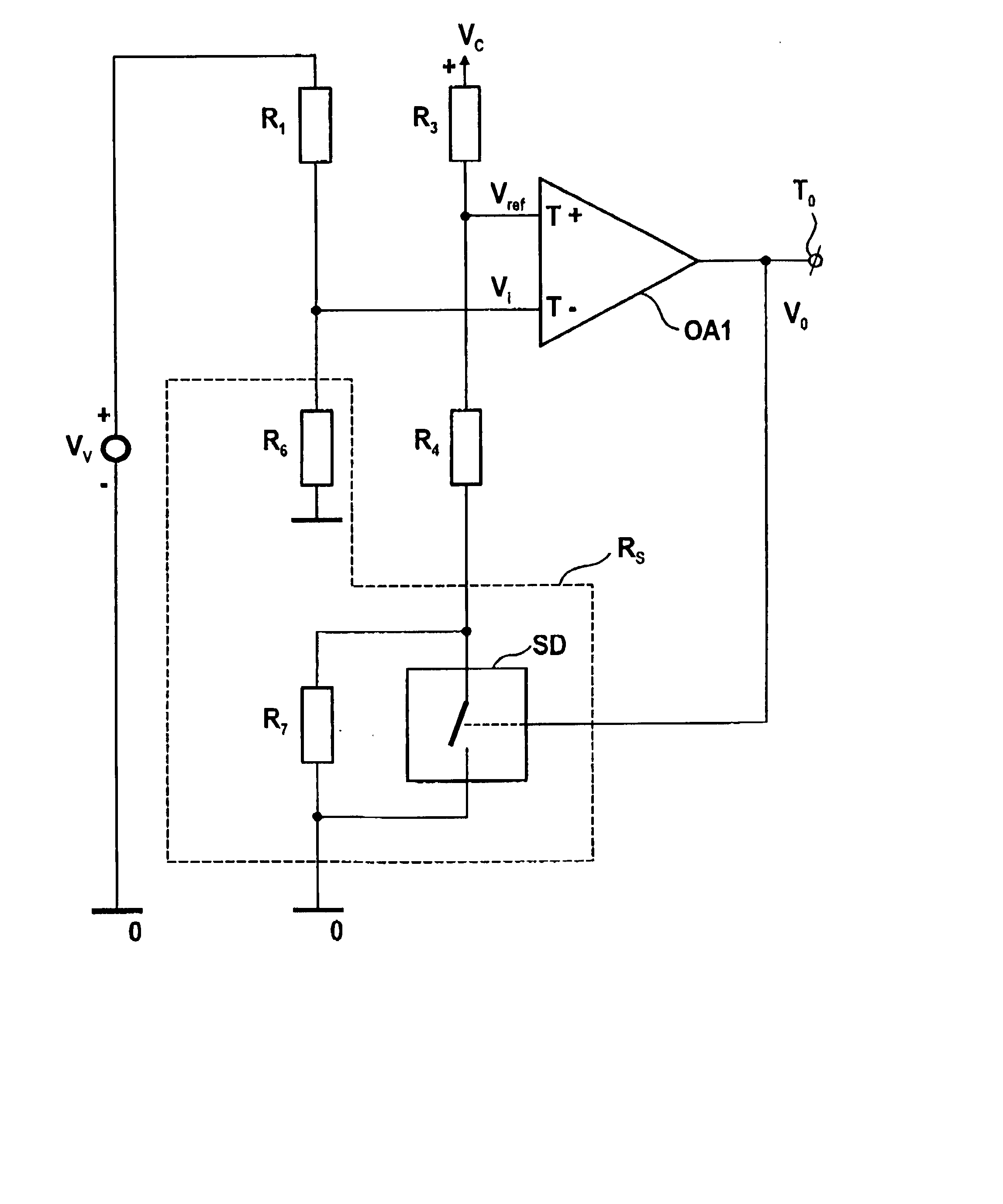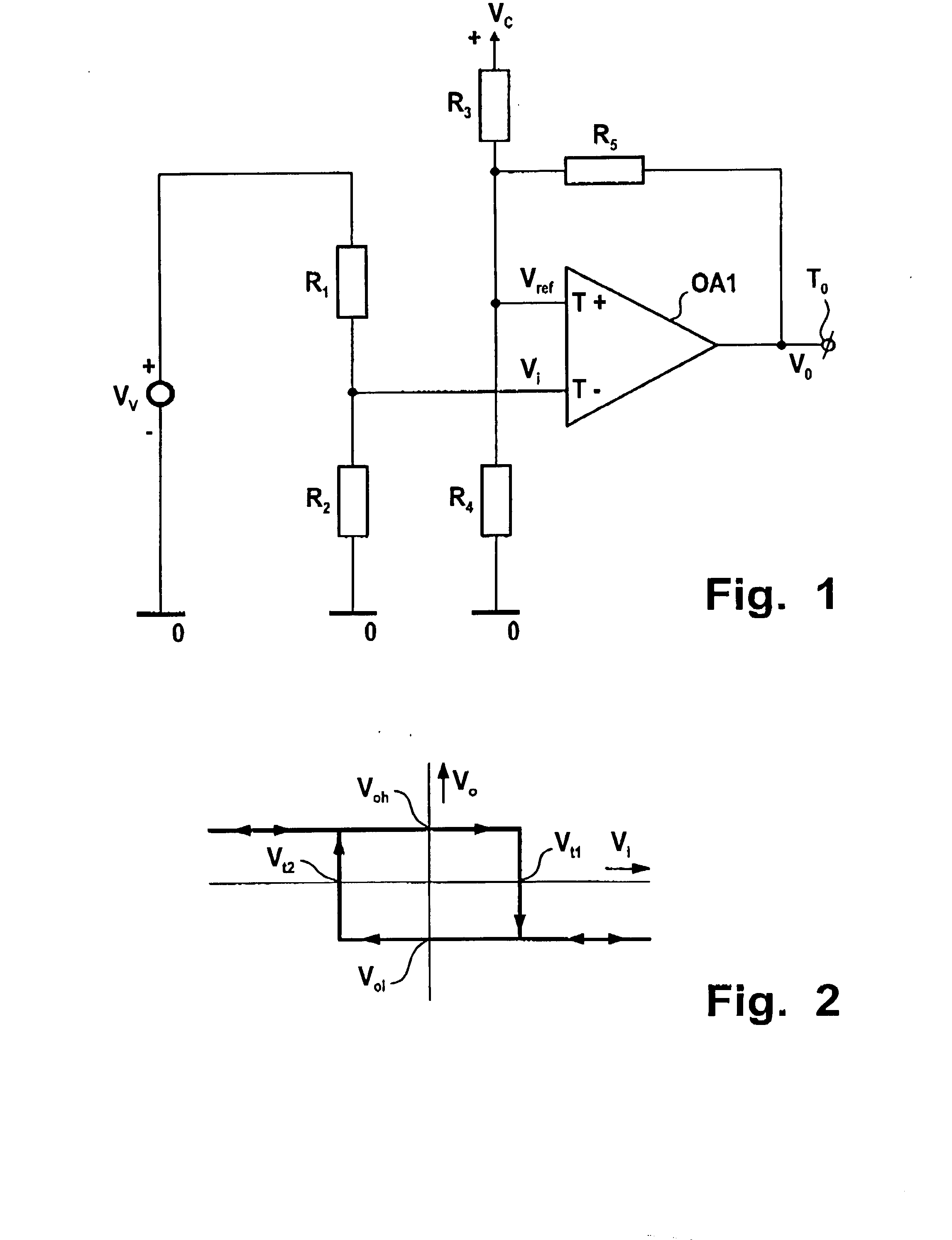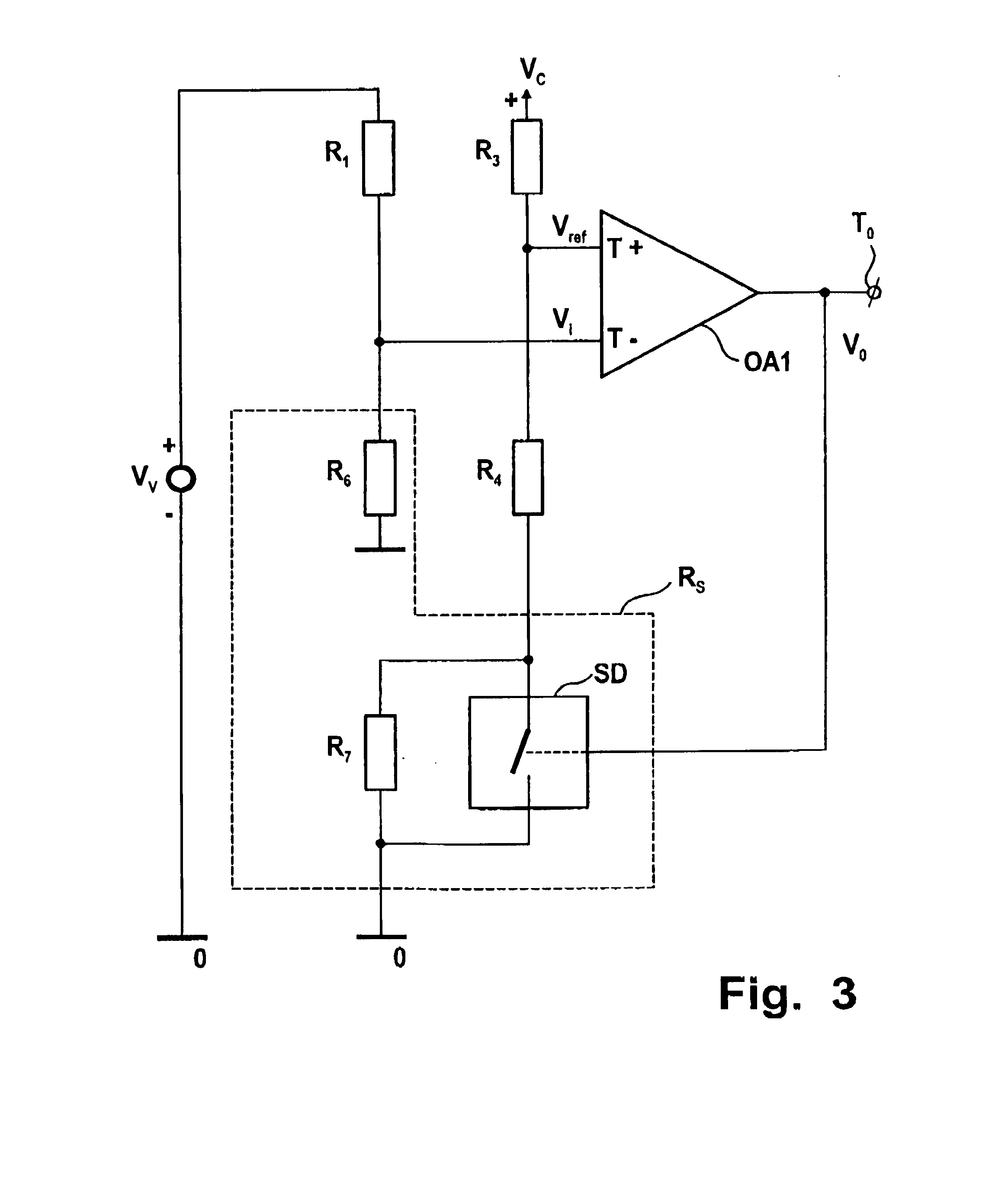Comparator circuit
- Summary
- Abstract
- Description
- Claims
- Application Information
AI Technical Summary
Benefits of technology
Problems solved by technology
Method used
Image
Examples
Embodiment Construction
[0043] The invention relates to a comparator circuit, and in particular, to a comparator circuit to lower power consumption and increase the accuracy of level detection.
[0044] The circuit has a first operational amplifier having a differential input, first and second voltage dividers being coupled to respectively a variable and a constant voltage source, outputs thereof being coupled to said differential input for supplying a differential input voltage thereto, the first operational amplifier having an output being coupled to its differential input and providing an output voltage stepwise varying between first and second voltage levels at an inversion of the differential input voltage. Such comparator circuit is on itself known e.g. as Schmitt trigger, and is to compare an input voltage with a reference voltage, therewith operating as a voltage level detector.
[0045] FIG. 3 shows an embodiment of a comparator circuit according to the invention, in which--unlike the conventional compa...
PUM
 Login to View More
Login to View More Abstract
Description
Claims
Application Information
 Login to View More
Login to View More - R&D
- Intellectual Property
- Life Sciences
- Materials
- Tech Scout
- Unparalleled Data Quality
- Higher Quality Content
- 60% Fewer Hallucinations
Browse by: Latest US Patents, China's latest patents, Technical Efficacy Thesaurus, Application Domain, Technology Topic, Popular Technical Reports.
© 2025 PatSnap. All rights reserved.Legal|Privacy policy|Modern Slavery Act Transparency Statement|Sitemap|About US| Contact US: help@patsnap.com



